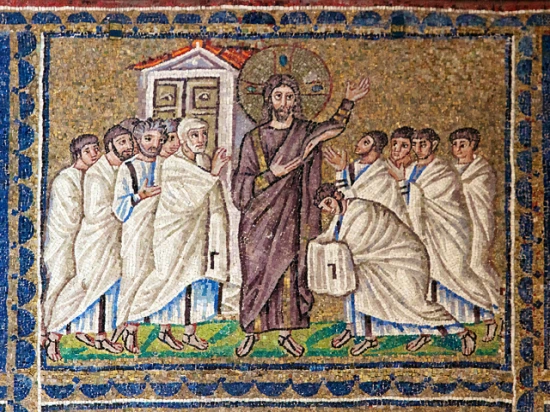19
Then the same day at evening, being the first day of the week, when the doors were shut where the disciples were assembled for fear of the Jews, came Jesus and stood in the midst, and saith unto them, Peace be unto you.
20
And when he had so said, he shewed unto them his hands and his side. Then were the disciples glad, when they saw the Lord.
21
Then said Jesus to them again, Peace be unto you: as my Father hath sent me, even so send I you.
22
And when he had said this, he breathed on them, and saith unto them, Receive ye the Holy Ghost:
23
Whose soever sins ye remit, they are remitted unto them; and whose soever sins ye retain, they are retained.
24
But Thomas, one of the twelve, called Didymus, was not with them when Jesus came.
25
The other disciples therefore said unto him, We have seen the Lord. But he said unto them, Except I shall see in his hands the print of the nails, and put my finger into the print of the nails, and thrust my hand into his side, I will not believe.
26
And after eight days again his disciples were within, and Thomas with them: then came Jesus, the doors being shut, and stood in the midst, and said, Peace be unto you.
27
Then saith he to Thomas, reach hither thy finger, and behold my hands; and reach hither thy hand, and thrust it into my side: and be not faithless, but believing.
28
And Thomas answered and said unto him, My Lord and my God.
29
Jesus saith unto him, Thomas, because thou hast seen me, thou hast believed: blessed are they that have not seen, and yet have believed.
30
And many other signs truly did Jesus in the presence of his disciples, which are not written in this book:
31
But these are written, that ye might believe that Jesus is the Christ, the Son of God; and that believing ye might have life through his name.







